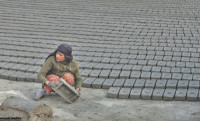Columns
Mapping a child marriage-free future
The cost of delay in its eradication is measured in stolen childhoods and shattered futures.
Bhuwan Ribhu
Child marriage is equivalent to child rape, and no euphemism can mask this crime as a mere social injustice. The world has overlooked this grave crime, which has been detrimental to the health, protection and education of our girls for far too long.
There are approximately 650 million married girls under 18 years of age, and some nations fare worse than others. In Niger, more than three-fourths of girls under 18 were married, with almost 30 percent of them being younger than 15. The Central African Republic, Chad and Mali follow behind, with 61 to 54 percent rates. Moreover, the recently passed Iraqi law permits children as young as nine to marry.
Nepal’s scenario
However, there are a few countries where child marriage persists despite the existing laws. One glaring example of this is Nepal, which remains one of the few countries in the world to prohibit child marriage and trafficking explicitly. Despite this, the country has South Asia’s second-highest rate of child marriage at 35 percent, as per the country’s National Demographic and Health Survey (NDHS).
According to the UN data, child marriage affects 5.4 million adolescents in Nepal, including 1.5 million under the age of 15. This alarming reality persists even with the country having one of the highest legal marriageable ages in the region—20 for both men and women. Interestingly, nations with high rates of child marriage often share similar underlying challenges, creating an environment conducive to this crime.
Lack of awareness and understanding of the issue are the primary reasons for child marriage’s prevalence in Nepal. Despite stringent laws, cultural resistance to their enforcement and cultural acceptance of child marriage further exacerbate the issue.
The Constitution of Nepal has ensured the protection of children’s rights. Article 39(5) of the Constitution explicitly prohibits child marriage and trafficking. Moreover, the Criminal Court prohibits child marriage as a crime, the National Child Policy, the Act Relating to Children-2018 and the Children Regulation collectively strengthen efforts to curb child marriage.
On the eve of 2025, Nepal took a decisive step to protect all children, especially girls, from this crime. Led by the Prime Minister, the government of Nepal, along with the Ministry for Women, Children and Senior Citizens, launched the ‘Bal Vivah Mukt Nepal’ campaign.
The key strategy of the campaign should supplement the policy framework with implementation, institutional capacity and strict law enforcement. This is especially crucial in regions with high child marriage rates where enforcement is absent. It also requires a ‘whole of society and whole of government’ approach, ensuring the involvement and accountability of panchayats, the collective responsibility of faith leaders and others to drive behaviour change and a fundamental shift in consciousness in favour of children.
A comprehensive strategy is essential—one that creates legal deterrence, builds awareness, ensures large-scale enforcement, strengthens institutional accountability, rehabilitates children, guarantees access to education and fosters community and ecosystem involvement.
PICKET Strategy
This cohesive approach is outlined in the PICKET strategy in my book When Children Have Children: Tipping Point to End Child Marriage. It is already in practice in India, with 250 NGO partners of Just Rights for Children implementing it across 400 districts. Moreover, in a landmark judgment in October 2024, the Supreme Court of India issued comprehensive guidelines that closely align with the PICKET strategy, marking a watershed moment in the fight against child marriage.
P in PICKET stands for policy, addressing prevention, protection and prosecution; I represents investment in building infrastructure, offering incentives and strengthening institutions; C stands for convergence across departments, governments and community stakeholders; K signifies knowledge-building, empowering stakeholders through awareness; E refers to ecosystem creation, ensuring child marriage cannot thrive; and T highlights technology, leveraging digital tools to monitor, detect and deter child marriage.
Every pillar of the government must operate in unison to dismantle the rooted system sustaining child marriage. This is not just a roadmap—it is a call to action. The cost of delay is measured in stolen childhoods, shattered futures and lives forever altered.
Call to action
The launch of ‘Child Marriage Free Nepal’ (Bal Vivah Mukt Nepal) marks a transformative shift in the collective fight against this deep-rooted issue. This is not just Nepal’s battle for a child marriage-free future—it’s a global call to action.
Child marriage not only hampers the health of children on an individual level but also impedes the nation’s overall economic growth and development. Elimination of child marriage aids the economic participation of women in the workforce, along with the promotion of their education and skill development.
We must stand against child marriage with unwavering resolve and be the generation that eradicates this heinous practice, ensuring every child enjoys the right to a childhood.




 9.12°C Kathmandu
9.12°C Kathmandu















